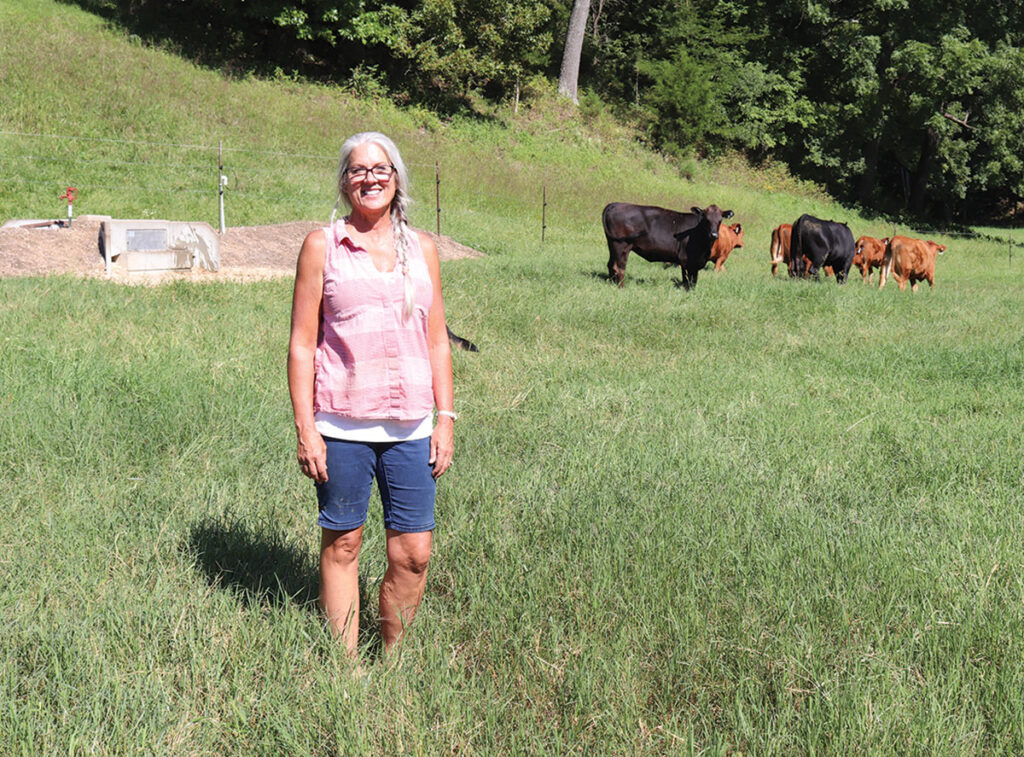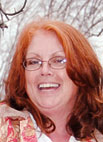
Tim and Debbie Cribbs have established a speciality beef operation at Bar X Cattle Company
MACKS CREEK, MO. – In 2014, Tim and Debbie Cribbs moved from their Lake of the Ozarks home to their Macks Creek, Mo., farm full time. Debbie said it was their “retirement” home but made the move a little sooner than they initially planned.
Natives of Northern Illinois, Debbie said she and Tim had what she described as a “farmette,” and Debbie was a licensed wildlife rehabilitator.
“We loved being out and away from everybody,” she said. “Animals were always kind of our thing, and Tim always wanted to raise cattle. When we built our house at the lake, he said I got want I wanted; now he was going to get a farm. Tim has been in construction and always dreamed of a farm.”
The couple purchased the first parcel, and Tim spent his weekends there. They eventually purchased the entire property, dubbed Bar X Cattle Company before the purchase. When an area cattle producer mentioned they would like to graze the farm, the idea of raising cattle came about.
“We were like, OK! We get to babysit cows,” Debbie said enthusiastically.
Soon, the couple decided to start their own herd, which included seven heifers they received in exchange for allowing their friend’s herd to graze. Their first herd, however, wasn’t exactly what they were looking for, and it wasn’t penciling out. Debbie realized there could be more to their cattle operation when she purchased organically-raised chickens from a local producer.
“I couldn’t raise chickens here because it was like McDonald’s for coyotes,” she recalled. “It took me five years to get on my friend’s chicken list because he only raises 1,000 birds a year. He would let me know if someone canceled, and before I knew it, I was up to 50 chickens a year. I told Tim I wanted to be the chicken lady for beef. I wanted to have a list of people waiting in line to get our beef. He asked me how I was going to do it, and I said I didn’t know yet.”
After some research, they disbursed their herd, except four of their original Angus females, and began breeding Red Devon cattle. About three years ago, they switched out their Red Devon bull for an Akaushi, a red Wagyu originating in Kumamoto, Japan.
“We knew Wagyu was really hot, but we didn’t like the black Wagyu,” Debbie said. “As we were looking, our butcher told us about the red Akaushi.”
The breed did not exist outside of Japan until 1994 when eight females and three bulls were shipped to the U.S. After an extensive search, they found their current herd sire, a full-blooded Akaushi Debbie has named Handsome.
“You have to be mindful of the lineage, and they are highly desired because of their low birthweights, excellent marbling, and temperament,” Debbie explained of the Akaushi. “Tim says I might call him Handsome, but he calls him Rollie because he cost more than a Rolex. He is the most expensive bull we have ever bought, but he is worth every penny.
“We went with Red Devon because they finish well on grass; we don’t want to do grain-finished cattle. We went with the Akaushi because of the marbling. Everyone told us we couldn’t do it on fescue. So, we have 40 acres of native grasses, and we plant annuals and legumes in some areas.”
Tim and Debbie went to a grazing school before they leased their ground and began applying the practices to improve their forages, soil, and, ultimately, their cattle. Tim has incorporated a variety of warm season and native grasses, ladino clovers and sorghum into their rotational pattern. The combination of forages, Debbie added, promotes growth and weight gain in their cattle without grains.
“Our marbling is no different (than animals finished on grain),” she said. “The grass and selecting the right breeds for grass is the key.”
Of the 360 acres at the farm, only a fraction are grazed by their 40-head herd. Cattle stay in paddocks for 24 to 48 hours, then moved. The herd does not receive grain, but mineral supplements are made available.
“We have enough grass for 100 because we manage it,” Debbie said. “This summer, neighbors were feeding hay because we had a drought, but we were unaffected because our cattle were on our natives; the natives love it when it’s hot. I can testify that rotational grazing works. Our soil samples have been awesome the last several years.”
Bar X’s first group of Akaushi/Red Devon steers were processed this year, and Debbie said the customers want more. Next year’s beef is already reserved.
“We are more profitable now with 40 momma cows than we ever were with 100. Also, this is easier on Tim and I than a commercial herd.”
— Debbie cribbs
“We know we’re onto something,” Debbie said. “It’s been a long, arduous process. Around here, when you’re trying to do a commercial market, it better be black, or you aren’t going to get anything for them. With the rotational grazing and effort we put into our beef, we decided that if we can’t get more for our cattle at the sale barn than what Billy Bob is getting for his cattle and feeding them weeds, what are we doing?”
Debbie said transitioning from a commercial herd to the specialty Akaushi/Red Devon operation has tremendous advantages.
“We are more profitable now with 40 momma cows than we ever were with 100,” she said. “Also, this is easier on Tim and I than a commercial herd. Our goal is to have 10 steers in the spring and 10 steers in the fall, and that’s all we sell.”
Steers are a minimum of 27 to 30 of age at the time of processing and typically weigh between 1,100 and 1,200 pounds.
“After 18 months, they are just starting to grow,” Debbie said.
The Cribbses have two defined calving seasons.
“He goes in at Christmas for 90 days, then back to the bull barn,” Debbie explained of the current breeding system. “Then Tim puts him back in June for 90 days. For our spring calving, I don’t want calves hitting the ground when it’s cold. God designed it so that in April, the grass is coming on strong; that’s the most nutritional value for the momma, making the milk better for the calf. We time our calving so that we have babies when the grass is nice and rich; they do so well.
“Some of our neighbors have their bulls in all the time, so they are dropping calves whenever. I don’t see how that’s profitable. We want the farm to pay for itself, so you have to manage it.”
Currently, they are not interested in producing breeding stock for other producers and are searching for an additional herd sire. All retained heifers will be registered because the couple wants to breed up to 100 percent Akaushi. Cattle are vaccinated twice a year.
For Debbie, there’s more to Bar X Cattle Company than making profits.
“You can sell purebred Akaushi/Wagyu beef in a large metropolitan area without effort,” she said. “Here, folks can’t afford it. With the price of the Akaushi, you have to ask more, and it takes longer to raise. We like the cross with the Red Devon because we can offer quality beef at an affordable price. There are a lot of hard-working folks who aren’t raising cattle, and they can’t afford a full Akaushi; that’s $32 an ounce. We like our niche because we can offer quality beef to the everyday person.
“We realize our practices now will impact future generations, so we are very conscious about our carbon footprint. The tractor only goes out when it has to. We don’t like to use a lot of chemicals and believe you are what you eat. We feel we can pay it forward by offering tasty, tender, affordable alternatives to what you have to buy at the grocery store. I’ve looked at the cost of grass-finished beef in the store, and mine is still cheaper and of higher quality, and I feel good about it. Eating healthy costs a lot of money, and we don’t want it to be like that.”







